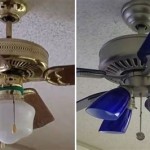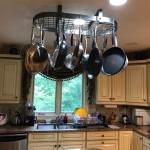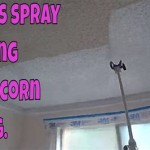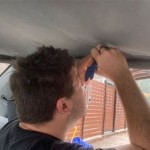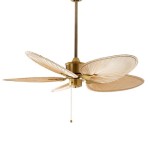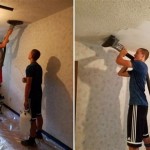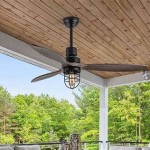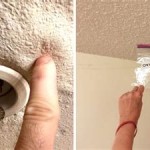Outdoor 72 Inch Ceiling Fans: A Comprehensive Guide
Outdoor 72-inch ceiling fans represent a significant investment in comfort and aesthetics for larger outdoor spaces. They offer a practical solution for managing airflow in patios, porches, gazebos, and other expansive areas, providing cooling breezes during warmer months and potentially aiding in insect deterrent.
Choosing the right outdoor ceiling fan requires careful consideration of several factors, including the fan's construction materials, motor type, weather resistance rating, style, and features. This guide provides detailed information about outdoor 72-inch ceiling fans, helping individuals make informed decisions when selecting a fan for their specific needs.
Understanding the Requirements for Outdoor Use
Unlike indoor ceiling fans, outdoor models are specifically designed to withstand the elements. They must be constructed with materials that resist moisture, corrosion, and damage from UV exposure. The Underwriters Laboratories (UL) provides ratings to categorize the suitability of ceiling fans for different outdoor conditions. Understanding these ratings is paramount when selecting an outdoor fan.
A "damp-rated" ceiling fan is suitable for covered outdoor areas, such as porches or patios with roofs, where the fan is shielded from direct rainfall. These fans are constructed with moisture-resistant components but are not designed for direct exposure to water. A "wet-rated" ceiling fan, on the other hand, is designed to withstand direct rainfall and can be installed in uncovered outdoor locations. Wet-rated fans feature sealed motors, weather-resistant blades, and rust-proof hardware.
Selecting the correct rating is crucial for ensuring the longevity and performance of the ceiling fan. Installing a damp-rated fan in an area exposed to direct rainfall will likely lead to premature failure and void the warranty.
The materials used in the fan's construction also play a significant role in its durability. Common materials include:
*Aluminum:
Lightweight, rust-resistant, and suitable for coastal environments. *Stainless Steel:
Highly durable and corrosion-resistant, making it ideal for harsh weather conditions but typically more expensive. *ABS Plastic:
Weather-resistant and cost-effective, often used for blades. *All-Weather Wicker/Resin:
Provides a natural aesthetic and resists moisture and UV damage but may require occasional cleaning.The choice of materials should align with the expected weather conditions in the installation area and the desired aesthetic.
Key Features and Considerations for 72-Inch Ceiling Fans
A 72-inch ceiling fan is specifically designed for larger outdoor spaces, generally exceeding 400 square feet. The large blade span allows the fan to move a significant volume of air, creating a noticeable breeze throughout the area.
Several features contribute to the overall performance and user experience of a 72-inch outdoor ceiling fan:
*Motor Type:
Most modern outdoor ceiling fans utilize either AC (Alternating Current) or DC (Direct Current) motors. DC motors are generally more energy-efficient, quieter in operation, and offer a wider range of speed settings compared to AC motors. While DC motor fans often have a higher initial cost, the long-term energy savings can offset the difference. *Blade Pitch:
The blade pitch, which is the angle of the blades relative to the horizontal plane, affects the fan's airflow. A steeper blade pitch typically results in greater airflow, but it can also increase noise levels. *Number of Blades:
The number of blades can influence both the airflow and the aesthetics of the fan. While more blades do not necessarily equate to better performance, they can distribute the airflow more evenly and contribute to a smoother, quieter operation. *Remote Control:
Many outdoor ceiling fans include a remote control, allowing users to adjust the fan speed, turn the light kit on or off (if applicable), and sometimes even reverse the direction of the fan for seasonal use. *Light Kit:
Some outdoor ceiling fans include an integrated light kit, providing illumination for the outdoor space. Light kits often utilize energy-efficient LED bulbs and may offer dimming capabilities. *Fan Speed Settings:
The number of speed settings available on the fan allows users to customize the airflow to their preference. DC motor fans typically offer more speed settings than AC motor fans. *Reversible Motor:
A reversible motor allows the fan to rotate in both clockwise and counter-clockwise directions. In the summer, the fan should rotate counter-clockwise to create a cooling downdraft. In the winter, the fan can be reversed to rotate clockwise, gently circulating warm air that rises to the ceiling, helping to improve energy efficiency.When selecting a 72-inch outdoor ceiling fan, it is essential to consider the height of the ceiling. For optimal performance and safety, the fan blades should be at least 7 feet above the ground. If the ceiling is lower than 8 feet, a flush-mount or low-profile fan may be necessary. Downrods of varying lengths can be used to adjust the fan's height for higher ceilings.
Installation and Maintenance of Outdoor Ceiling Fans
Installing an outdoor ceiling fan typically requires some electrical knowledge and experience. It is generally recommended to hire a qualified electrician to ensure the installation is performed safely and correctly, adhering to all local electrical codes. The installation process typically involves:
*Mounting Bracket Installation:
Securely attaching the mounting bracket to a structural support beam in the ceiling. *Wiring Connections:
Connecting the fan's wiring to the electrical wiring in the ceiling, ensuring proper grounding. *Fan Assembly:
Assembling the fan blades and other components. *Fan Attachment:
Attaching the assembled fan to the mounting bracket. *Testing:
Testing the fan's operation and ensuring all features are working correctly.Proper maintenance is essential for extending the lifespan of an outdoor ceiling fan. Regular cleaning of the blades and motor housing is necessary to remove dust, dirt, and debris. A mild detergent and a soft cloth can be used for cleaning. Avoid using harsh chemicals or abrasive cleaners, as these can damage the fan's finish. Periodically inspect the fan's components for any signs of wear or damage, such as loose screws, cracked blades, or corroded wiring. Address any issues promptly to prevent further damage and ensure safe operation.
For coastal environments or areas with high humidity, consider applying a protective coating to the metal components of the fan to prevent corrosion. This can help to extend the fan's lifespan and maintain its appearance.

Hunter 72 Ceiling Fan Matte Black

Liberator 72 In Indoor Outdoor Oil Rubbed Broe Ceiling Fan Dan S City Fans Parts Accessories

Home Decorators Collection Tager 72 In Smart Indoor Outdoor Matte Black With Whiskey Barrel Blades Ceiling Fan Remote Powered By Hubspace

72 Casa Vieja Tahoe Breeze Black Led Outdoor Ceiling Fan With Remote

Windmill 72 00 Inch Outdoor Fan

Hunter Overton 72 Ceiling Fan In Matte Black 52618

72 Casa Vieja Predator English Broe Outdoor Ceiling Fan With Remote Style 3k535

72 Predator Outdoor Ceiling Fan

72 Inch Black Large Ceiling Fans With Lights And Remote Modern Fan 8 Wooden Blades For Kitchen Living Room Indoor Or Outdoor Patio

72 Windmill Ceiling Fan For Sale The Patriot
